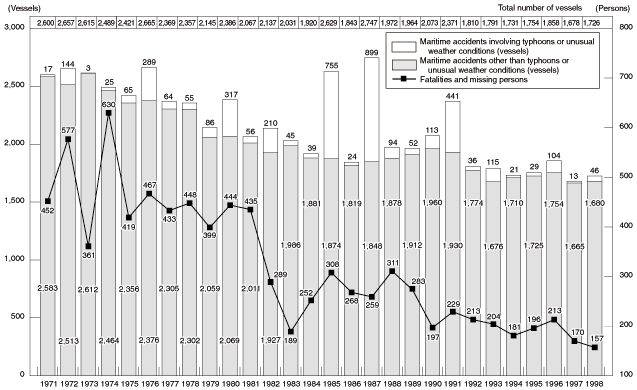| Figure 13 |
Changes in Vessels Requiring Rescue, Fatalities and Missing Persons |

| Notes: 1. |
Source: Maritime Safety Agency |
| 2. |
Maritime accidents that occurred
in 1983 as a result of an earthquake in the Japan Sea, are not recorded
here. |
| 3. |
Maritime accidents that occurred
in 1993 as a result of an earthquake in the Japan Sea south west of Hokkaido,
are not recorded here. |
|
|
